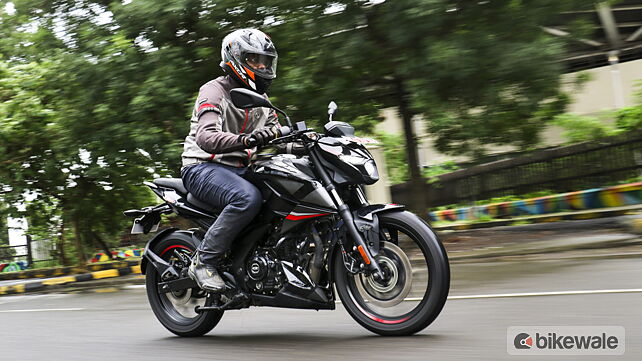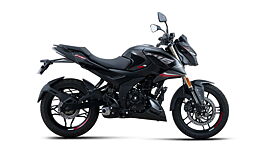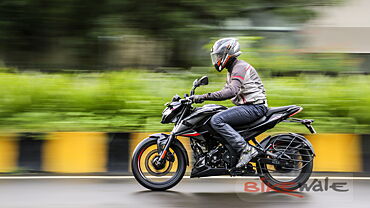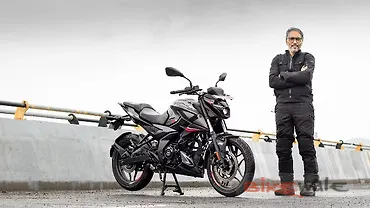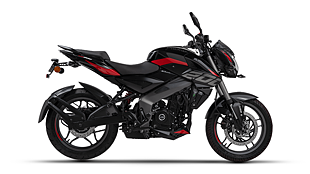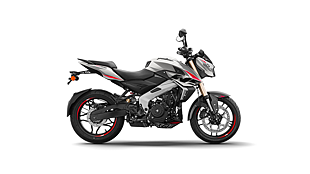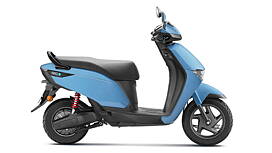Introduction

Why to buy it?
- Tractable and refined engine
- Agile handling
- Dual-channel ABS
Why to avoid it?
- Lack of modern features
- Nothing extraordinary on offer
The middle-weight motorcycle segment, 300-600cc to be specific, has been gaining ever-increasing popularity in India, thanks to the good balance of thrill and practicality it offers. But that doesn’t mean things have fizzled out lower down the displacement spectrum, and the 150-200cc class still attracts a healthy number of buyers. Bajaj is one of the leading contenders in this genre with its Pulsar brand being the biggest contributor to that. However, the brand seems to be wanting an even bigger piece of that pie — in comes the Pulsar N160.

Due to their never-fading popularity, all the older Pulsars continue to exist, including the Pulsar NS160. So, the N160 doesn’t replace any of the bikes in Bajaj’s stable. Instead, it represents the next-generation Pulsar platform, which debuted with the 250s, in a smaller displacement package. We had a brief stint with the N160 a few days back when we established it as a good motorcycle. But now, we have tested it more thoroughly and comprehensively, and here’s what we think about it.
Styling and Quality

The Pulsar N160 looks like a quintessential modern streetfighter with a low-slung headlamp, a sculpted fuel tank with angular extensions, and a sharp tail. While some may not like the close resemblance the headlamp design bears with the Yamaha MT 15 V2, it actually lends the bike a robotic and radical appeal. Every time I stopped at a traffic signal, the N160 did attract admiring and curious glances from the onlookers. And if you’re not a fan of this understated black paint scheme, there are three more colours to choose from, including red and blue which look funky and vibrant.

Quality-wise, the motorcycle doesn’t exude an outright premium appeal but it’s good and acceptable. Although there’s a lack of uniformity in the black shade present across the bike, the paint quality, in general, is decent and the plastic panels feel sturdy. There aren’t any uneven panel gaps to be found and switches operate with tactility. And despite riding it every day for more than a week, none of its panels made any rattling or squeaking noises.
Ergonomics and Comfort

At 795mm, the seat height of the motorcycle is friendly, and so are its ergonomics. Hopping on the bike should be easy even for shorter riders and once in the saddle, it greets you with a little committed yet comfortable riding triangle. The tubular handlebar is angled forward and the footpegs are placed mildly at the rear. Hence, you’re seated a little crouched ahead with aggressively folded knees but nothing to the extent of invoking discomfort. As for the seat, while it isn’t cushy enough to pamper you on a full day’s ride, I loved the abundant space it offers to move back and forth freely.

Complementing the admirable ergonomics is the suspension setup. Well, it doesn’t offer a ride that’s outright plush, but it takes on most surfaces with composure. Ride over a set of rumblers, shallow potholes, or protruding manhole covers, and it nearly glides through with just a mild kick at the back. And on open highways with minute wavy undulations, it remains properly settled. It’s only while going over the nastier, sharp-edged stuff that it feels firm and demands you to slow down.
Performance and Handling

The N160 not only looks like a modern Pulsar but also sounds like one. There’s a distinctive rumble and bass from the exhaust note that’s sweet and involving. And once you get going, you realise it’s a profoundly refined, tractable, and engaging motor. Of course, it’s not Honda-like refined and there’s a mild pulsating sensation, but that only gives it a character. Little vibrations can be felt only towards 8,000rpm and beyond.

Off the line, the N160 doesn’t feel entertainingly quick since the power delivery is very linear. However, the flat torque curve of the motor makes it pretty tractable; one can easily do 30-35kmph in fifth gear without a hiccup. To feel the real punch, you’ve to stay north of 5,000rpm, which is the more exciting territory. This is where it delivers a strong pull almost up to its redline of 9,000rpm, thereby making overtakes and zipping your way through traffic quite easy and quick. Even the gearbox is as crisp as a fresh cookie and the clutch is light like a feather, all of which make it an easy city ride.
On the highway, the motorcycle feels the most unstrained around 90-100kmph, after which vibrations start creeping in and the engine feels a bit stressed. Further, overtakes need some planning and downshifting, which is understandable considering its displacement.

The most impressive aspect of the bike is its handling. The well-sorted chassis, light kerb weight of 152kg, and slim 100/80 (front) and 130/70 (rear) section tyres make the N160 an absolute stunner to flick through tight gaps in traffic and while switching lanes. The steering feels light and responsive, the tyres are reasonably grippy, and the chassis is quite communicative. It’s extremely fun around a set of twisties as well. Although I couldn’t push it hard around my favourite mountain road, thanks to the incessant rains, even riding it conservatively gave a sense of good control, agility, and cornering stability.

Brakes, meanwhile, feel apt for the job when riding at controlled speeds. The front disc has a good bite and progression while the rear rotor has the latter in abundance. However, once you start riding faster and spiritedly, the feel from the front brake lever doesn’t feel enough and you have to squeeze it hard to fetch the desired stopping power.
Features and Technology

In terms of features, there are a couple of standout elements like a USB charger, dual-channel ABS, and a 14-litre fuel tank which is the largest in this segment. However, Bajaj has equipped it with a semi-digital instrument cluster, unlike its rivals all of which get a fully-digital console. Besides the basic data, it shows distance-to-empty and gear position in a clear layout and font. That said, we think Bajaj should’ve given it more goodies like Bluetooth connectivity, hazard lamps, and a silent starter for that edge over its rivals.
Fuel Efficiency

The Pulsar N160 really impressed us on this front as we registered mileage of 51.6kmpl in our test, which is one of the highest in this segment. With a 14-litre fuel tank, that translates to a range of about 722km.
Should you buy it?

The Bajaj Pulsar N160 is an attractive package for it can be used for daily commuting, weekend rides, and maybe for occasional touring as well. It delivers a nice balance of sportiness and practicality. It’s not just agile and reasonably quick, but also comfortable and fuel-efficient. In a nutshell, it’s a good motorcycle.

But that’s where the problem lies – it’s just good and not great. In a crowded segment with extremely capable offerings like the TVS Apache RTR 160 4V and Hero Xtreme 160R, the Pulsar N160 doesn’t bring anything extraordinary to the table. It’s not setting a benchmark on any front, be it performance, handling, features, or aesthetics. Also, with prices starting from Rs 1.23 lakh (ex-showroom) for the single-channel ABS variant, it isn’t the cheapest either. But having said that, if you still buy the N160, it might not blow your mind on every ride, but it’ll efficiently do all that’s expected from a sporty commuter.
Photography by Kaustubh Gandhi
Gallery
1/122
Bajaj Pulsar N160 Right Side View
Double Tap to Zoom











